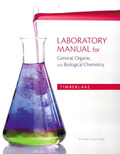
Concept explainers
a.
To determine:
Whether the following blood type could be donated to a person with type B blood: blood type A.
Introduction:
In humans, four different types of blood groups are found- A, B, AB, and O. These are differentiated on the basis of the surface protein or presence or absence of Rh factor. Blood transfusion is usually not safe if the blood of compatible type is not received, because on RBC surface glycoproteins are present which act like antigens. On blood transfusion, these antigens behave as a foreign particle which leads to damage of the cells.
In type, A blood group, type A antigen is present on the surface of RBC and their plasma has anti-B type of antibody. In type B blood group, the RBCs surface have type B antigen and plasma has anti-A antibody. The blood group of these individuals is identified as type B.
b.
To determine:
Whether the following blood type could be donated to a person with type B blood: blood type AB.
Introduction:
In AB group, both type of antigen i.e. type A or type B antigens are present on RBC’s surface, but their plasma lack antibodies. Due to this, the individual having AB blood group is identified as a universal acceptor. In type B blood group, the RBCs surface have type B antigen and plasma has anti-A antibody. The blood group of these individuals is identified as type B.
Want to see the full answer?
Check out a sample textbook solution
Chapter 6 Solutions
EBK LABORATORY MANUAL FOR GENERAL, ORGA
- The plasmalogens are a group of lipids found in nerve and muscle cells. How do plasmalogens differ from fats?arrow_forwardDescribe the structure of a micelle formed by the association of fatty acid molecules in water. What forces hold the micelle together?arrow_forwardThe function of glycerol in embalming fluids is A. to act as a humectant B. to dehydrate C. to preserve D. to preserve body fatsarrow_forward
- 19. The lipid bilayer is fluid-like and flexible. Because of this, it is often described as a. ductile. b. fluid mosaic. c. squashy. d. supple elastic.arrow_forward34. Which of the following statements about salicylic acid is true?A. has no solubility in the membrane in any formB. damaged by stomach acidC. has a high pKaD. is most widely absorbed from the stomachE. is most widely absorbed in the intestinearrow_forward1. LDA 2. CH3CH2CH2CHO 3. Neutralizing work-up O 'Н Iarrow_forward
- Define the following terms: a. Humectant b. Emollient c. Occlusive d. Skin Rejuvenator e. Ceramides f. Ointmentarrow_forward17. A membrane lipid is often depicted as shown below in Lipid I. Which part of the molecular structure of Lipid I does the circle represent? ŃN(CH,la O-P Lipid I molecular structure of Lipid I a. Part A b. Part B c. Part C d. Parts A and B e. Parts B and Carrow_forward5. The molecule below is classified as OH A. 18:3:6:9 C. 20:3 Δ , Δ12, Δ15 B. 20:3 A³, Aº, Aº D. 20:3 Δ, Δ12, Δ18 CHEM 120 Recitation 11 Amino acids proteins er 6. What type of lipid is shown below? H OH NH H A. Wax B. Glycerophospholipid C. Triglyceride D.Sphingomyelinarrow_forward
- Refer to Figure and answere following questions: a. People with type O blood can donate blood to anyone, but they cannot receive blood from everyone. From whom can they not receive blood? b. People with type AB blood can receive blood from anyone, but they cannot give blood to everyone. To whom can they not give blood?arrow_forward18. A membrane lipid is often depicted as shown below in Lipid I. Which part of the molecular structure of Lipid I does the wavy line represent? вн HO-C-CH=CH. HЙ HC-NHC Но. CH2 Но o+CH2 Lipid I ОН molecular structure of Lipid I ОН a. Part A b. Parts A and B c. Parts A, C, and D d. Parts C and D e. Parts B and Darrow_forward1. Molecules 1-4 are ___? Lipids Carbohydrates Amino acids 2. Molecule 4 is composed of monomer(s) ___? 1 and 2 1 only 2 only 1, 2, and 3 3. Molecule 4 is for ___? Storing energy Membrane integrity Protein structurearrow_forward
 Chemistry for Today: General, Organic, and Bioche...ChemistryISBN:9781305960060Author:Spencer L. Seager, Michael R. Slabaugh, Maren S. HansenPublisher:Cengage LearningChemistry: Matter and ChangeChemistryISBN:9780078746376Author:Dinah Zike, Laurel Dingrando, Nicholas Hainen, Cheryl WistromPublisher:Glencoe/McGraw-Hill School Pub Co
Chemistry for Today: General, Organic, and Bioche...ChemistryISBN:9781305960060Author:Spencer L. Seager, Michael R. Slabaugh, Maren S. HansenPublisher:Cengage LearningChemistry: Matter and ChangeChemistryISBN:9780078746376Author:Dinah Zike, Laurel Dingrando, Nicholas Hainen, Cheryl WistromPublisher:Glencoe/McGraw-Hill School Pub Co


